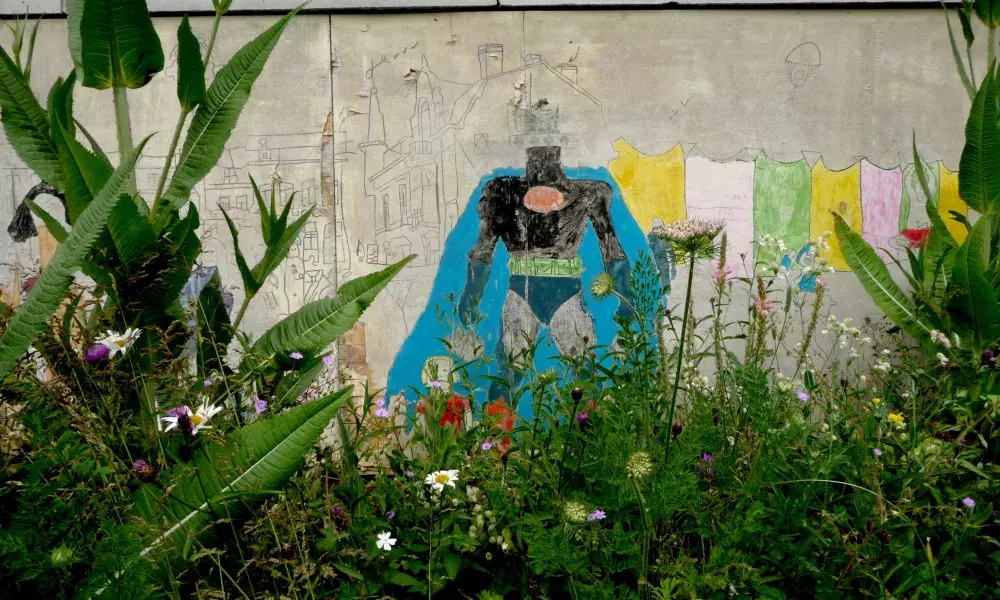
Executive summary
In this fourth and final journal of the APTBC project, we trace the last stages of the project, from the final event, to the closure, to the inauguration of the two main investments, the day-shelter and the creative station, the Maison du Peuple. Through interviews with three stakeholders and the analysis of the knowledge generated over the course of the 4-year implementation, it was possible to gather the lessons learned and reflect on how, starting from the specific case of Seraing, useful recommendations can be drawn to address the challenges that an innovative project entails. In particular, it seems useful to highlight how certain structural difficulties were addressed and how efforts were made to construct the project through subsequent adjustments, while maintaining clear objectives and a shared strategy, at least within the project management core. In this journal, we analytically seek to describe how change, whether tangible or not, has been produced and what type of process has been necessary to promote it.
Project’s progress
As narrated in this article, the project's closing event took place in early June 2023, with a pivotal moment being the inauguration of the Maison du Peuple, where conclusive meetings and discussions were held. Shortly before the final event, a call for projects was launched, marking the first time the venue was shifted from the Ruche à projets to the new location. Concurrently, the new management team, consisting of a project-affiliated coordinator and two members from the municipality's prevention service, began organising an agenda of events and public openings. This activity aimed to involve both new and existing project holders, local associations, the nearby cultural centre, resulting in a busy schedule of animated moments and a new call for projects. The two primary objectives during this initial "autonomous" phase were fostering collective dynamics and ensuring the project's sustainability in the medium to long term.
In this transitional phase towards a planned governance with the prevention service, the coordinator is responsible for developing the partnership dimension, consolidating programming, and contributing to the strategic vision for the future, which includes reflecting on the potential development of partial economic autonomy. Currently, at the Maison du Peuple, there are 17 active projects, a regular afternoon of general public opening each Wednesday, and events organised following a co-production approach. The ongoing discussion between the prevention service and other municipal services supporting the social cohesion plan (PCS) aims to identify a legal structure and operational model that is specific to the Maison du Peuple, fully integrating it into the institutional mechanism while maintaining the co-design principles identified during the APTBC project. This aspect will be further explored in an upcoming web article.
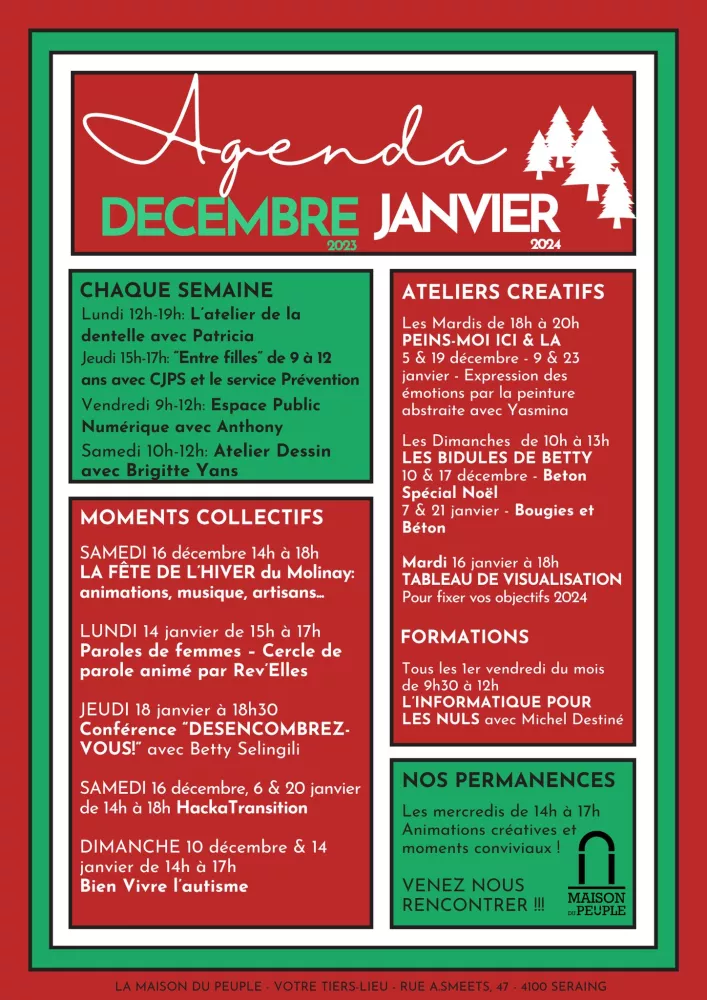
In the meantime, the 'Ruche à projets' has not been abandoned, on the contrary. The premises have been taken over by mediators from the prevention service, who, in a neighbourhood in need of regular intervention and special care, did not have a space to work and welcome people. The previous activities have been transferred to the Maison du Peuple, and a limited number of project holders did not continue their journey due to the relocation of activities to another, albeit nearby, neighbourhood.
The day-shelter was finally inaugurated in October 2023, together with the Médibus, the brand-new vehicle “for reaching out to vulnerable people in Seraing”, as it is presented on the municipality’s website. The day-shelter, compared to the previous one, offers more welcoming spaces that allow the separation of activities and enable visitors to access more services with increased privacy and comfort. The inauguration in October allowed the social workers to launch the "cold weather plan" in a timely manner, thus welcoming the most vulnerable individuals during the cold season and providing support to the night-shelter when necessary. As anticipated, the Médibus has started its operations, expanding access to basic healthcare for the most marginalised people, with openings at 4 different locations in the city.
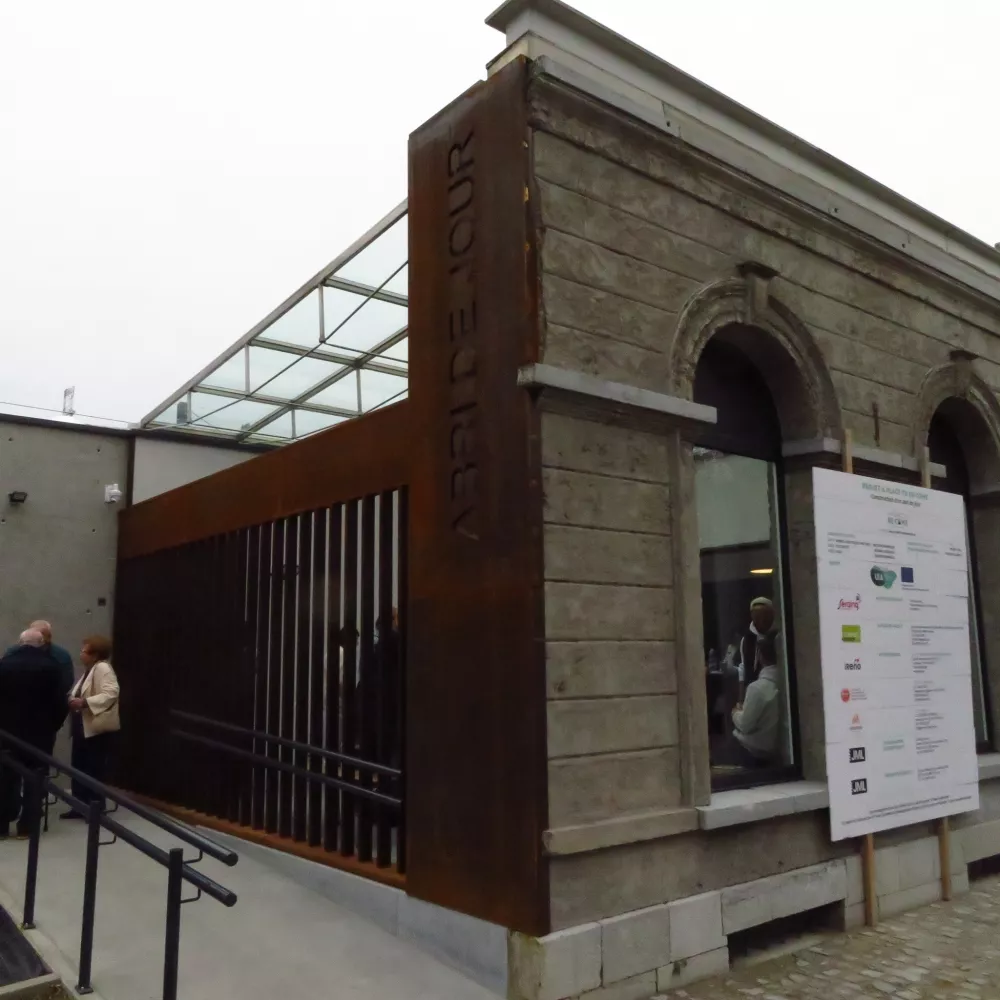
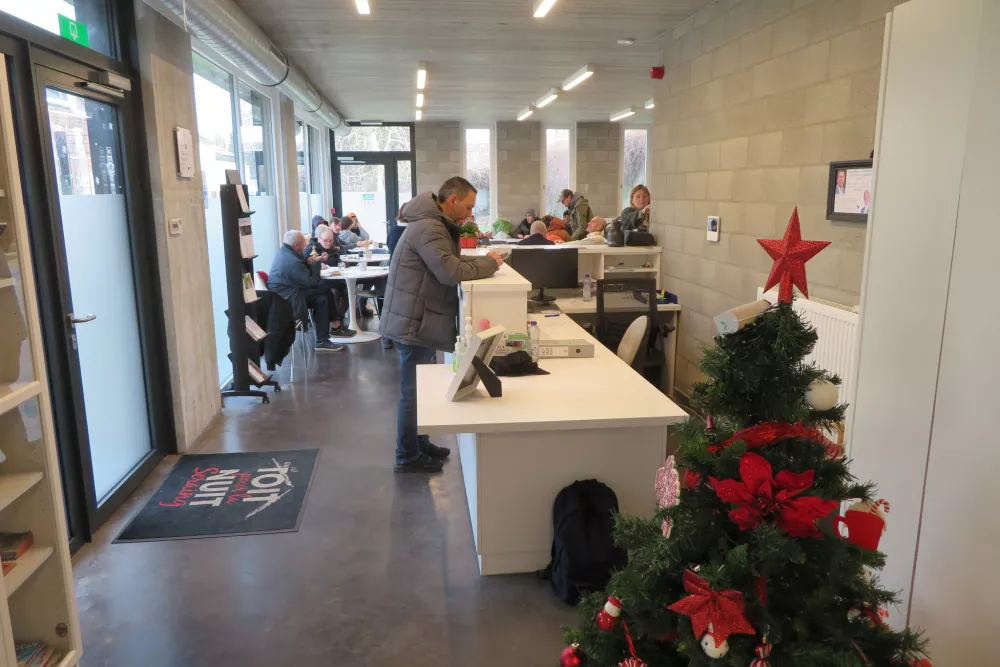
The regeneration of green areas was the project action that gained the most visibility and impact throughout the project, but its consolidation is not yet fully assured. On one hand, the presence of one of the gardeners trained through the nature-based training offered by the project is now permanent. Since January, the gardener has secured a permanent contract and works with a small team of two other workers, focusing on the maintenance of parks and green areas using the sustainable management methods learned during the training. On the other hand, the interventions carried out by Natagora on the so-called "exemplary points" and the didactic walking paths have had a limited impact and are relatively unknown to the public, resulting in some cases being overlooked. To address this issue, a working group has been established, involving Natagora, the management of the Maison du Peuple, and the public works department. The team aims to find suitable solutions and enhance communication to prevent the project's results from being dissipated.
Sophie Barla, environmental advisor for the city of Seraing, explains how the public works department has integrated the new approach to the management and maintenance of green areas, with a particular focus on biodiversity and the elimination of pesticides, while still maintaining the traditional method. Barla acknowledges that without a project like APTBC, aimed at experimenting with new practices, they would not have dared to test different approaches from the usual ways of working.
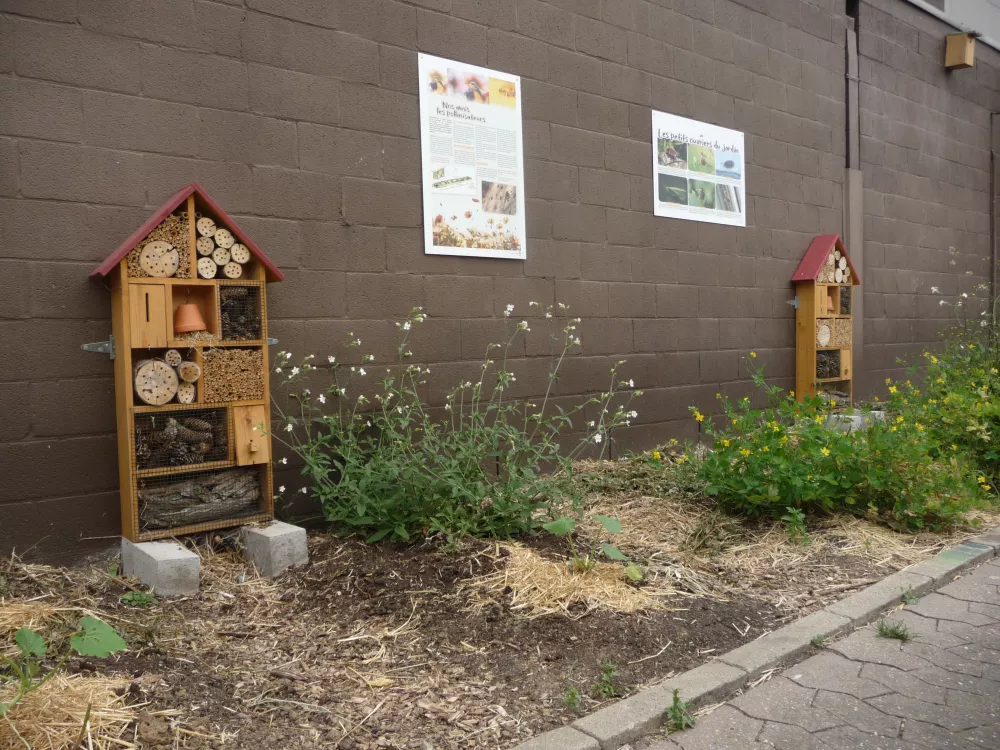
The application is still linked to the project and presented as a project outcome, but it must find its own autonomy. This will happen when the new service provider tasked with managing the application is identified. The tender will be launched soon. The remaining concern is whether the project's established goals of digital inclusion and networking of all municipal services in the most accessible way possible will be maintained as top priorities.
The project’s plan for the sustainability of actions in the medium to long term is built around three axes:
- To create a "tiers lieu", a place for co-design and collective life at Maison du Peuple, relies on the establishment of a specific legal form that currently does not exist in Seraing for public services. This form would be expressly designed and defined to ensure the future and autonomy of the Maison du Peuple. While this management model is being negotiated and refined at the institutional level, the current leadership allows for the transition by testing and experimenting collaborations, fostering a collective dynamic, and contributing to reflection based on knowledge built in the field. In the discussion on the management model to adopt, crucial was the reflective work carried out based on the lessons learned during the study visit to Turin in 2021.
- Some changes that have been introduced in the working methods of certain departments, or small innovations that have spawned new projects, albeit with less emphasis and fewer ambitions, are consolidated and will continue to be promoted in the medium term. This is the case, for example, with the web application and management of green areas.
- Based on new forms of cooperation and drawing from an extensive wealth of knowledge built during the project, some new projects have already been promoted[1], and a new social cohesion plan will be written. This transfer of best practices and knowledge has been achieved through collaborations that emerged because of the project, ensuring its upscaling.
Generated Knowledge
Over the course of the four years of project implementation, a considerable amount of knowledge has been generated, both through investigations, analyses, and data collection, as well as through trials, errors, and minor adjustments. This knowledge has allowed for the fine-tuning of some initiatives and optimisation of resources, sometimes even revising the process along the way. Here, we seek to summarise the key elements of this rich material, drawing on the lessons learned and potential recommendations that can be formulated from the experience.
a. Lessons learned
- Institutional support was weak and a great effort was devoted to obtain it. Demonstrating the tangible impact of the project was the most effective form of promotion. On one hand, weak leadership has been a challenge and required significant effort from the project team, especially to ensure political commitment that guarantees the project's sustainability in the medium to long term. On the other hand, during the implementation, a certain level of disengagement has allowed for easier and smoother solutions to problems to be found. Ultimately, initiatives still had to be approved at the strategic level, but certain intermediate steps could be tested with some freedom.
- The management of European funds requires knowledge of rules and procedures that are not always familiar to those working in the economic and financial services of a municipality, especially if it is of small to medium size. In the case of Seraing, for example, which is a municipality managing several projects supported by European funds, there has been a deceleration in the procurement procedures related to public contracts, despite a technician affiliated with the project working in the relevant office. What was lacking to make the process smoother was direct coordination with the financial department. Despite the difficulties, the significant organisational and collaborative effort made to complete the two major planned investments (the day-shelter and the Maison du Peuple) within the expected timeframe, made it possible to finish the work on schedule.
- One of the most significant - if not the most significant - lessons that the project implementation has taught the team and all stakeholders involved is the importance of human capital, not only for achieving objectives but especially for potential impacts and sustainability in the medium to long term. In particular, human capital, meaning the presence of the right individuals in strategic roles, has proven crucial within the project team and municipal services and among partners because it has been the key to change in at least three aspects. Firstly, in generating the necessary collective dynamics and connecting people, leading them to adopt a common perspective. Secondly, in motivating the actors and participants and sustaining their motivation over time. Thirdly, in facilitating the generation of desired changes and fuelling the virtuous process that produces further positive changes.
- For the APTBC project, co-production and participatory approach are not only essential elements but also innovations compared to usual practices, extending not only to the project but to the design of urban policies. The municipality of Seraing maintains a relationship with its citizens more as a service provider than a co-producer of services. The lack of a shared co-design practice is observed both among municipal departments and citizens, who are less trained to proposing and organising initiatives and more accustomed to being passive users. Reversing the course and effecting change has required time and significant dedication throughout the project. The main tool chosen to gradually introduce a co-design model to citizens and municipal officials has been that of calls for projects. One after another, these calls have supported the engagement of the most motivated citizens with a strong willingness to participate, testing the governance model, adjusting operating methods, and step by step building a grassroots collective dynamic, showcasing results and progress. What worked in the calls for projects was the proposed governance model, which encouraged participants to collaborate and build a small community, despite each having an individual project. The idea was that different projects would contribute to animating a space, first the 'Ruche à projets' and then the Maison du Peuple, advancing their own initiatives within the framework of a collective programme. This approach has generated good synergies, shared responsibilities, and mutual support.
- Monitoring and evaluation are weaknesses of the project because they were not adequately planned during the writing phase or at the very beginning of the implementation process. Here, we are not referring to the monitoring of the project's direct results, which were correctly tracked and documented. Instead, we are addressing the monitoring and evaluation of outcomes, i.e., the less observable effects of the project's actions on the target groups. As explained elsewhere, each partner was left with the responsibility of conducting the monitoring of their own actions without a common strategy and an overall plan. This has resulted in a significant difference in the quality of data collection and analysis across the various work packages. Additionally, there was a lack of an overall and integrated project evaluation that would allow cross-referencing data and assessing, even from a qualitative standpoint, the impacts not only of individual actions but also of their combination. To achieve this, a clear and detailed programme with defined roles, a data collection plan, and the identification of the most appropriate methodologies for their analysis should have been prepared at the beginning of the project. This type of action would have ensured a better understanding of the project's impacts and provided the municipality with additional tools for the design and evaluation of its policies to fight urban poverty and improve living conditions for its citizens.
- The project communication has differently addressed beneficiaries and stakeholders. While communication directed towards beneficiaries utilised various and composite tools depending on the objectives, with a particular focus on web-based methods (dedicated website, Facebook pages), and the use of photos and videos, communication with stakeholders, primarily institutional and associative actors, required significant effort in presentations and bilateral meetings involving direct engagement of all project partners. It was evident from the first year that certain results would not be achieved, and the consolidation of some actions would not be possible, unless a continuous and relentless lobbying activity was undertaken to convince even the most sceptical about the project's merits. This has implied the need to dedicate a significant amount of time to build a flexible agenda and tailor it to the needs of various stakeholders, without adhering to a rigid and pre-established plan but rather making adjustments incrementally. For example, the development of the Seraing en poche application, which involves the inclusion of references to numerous traceable services in the city, took the entire duration of the project to gather data, establish consensus, and co-design the device so that it could be permanently adopted by the municipal communication department. In the end, the achieved result is the effective integration of the project's action into the municipality's practices and a service that consolidates all relevant information in a single digital space, as it might not have seemed possible at the beginning of the project.
- What we have learned regarding sustainability and the possibility of upscaling the project is that the earlier the better. A strategic plan for the post-project phase must be clear from the beginning, while still allowing room for experimentation. The lack of such a plan was compensated for during the project, primarily thanks to the personal effort of some particularly motivated individuals. However, under different conditions, sustainability would have been jeopardized.
b. Recommendations
- When institutional support is weak or fragmented, at the project design stage, a system of governance should be put in place, trying to assemble relevant and motivated stakeholders. The governance system should be conceived and structured in accordance with the involved parties, who should collectively identify a working model based on discussion and the definition of shared values and objectives, incorporating negotiation mechanisms and horizontal decision-making processes to leave room for adaptation. Once the project is launched, the system can be reinforced and broadened to include more actors that can be encouraged to participate by witnessing the initial on-field results.
- Given the importance of staying on schedule in the implementation of an investment and properly executing the project in compliance with the procedures set out in the UIA contract, it seems particularly appropriate to establish a governance structure at the beginning of the project between the project team and the finance and public works departments. This involves identifying key individuals, establishing clear and direct collaboration methods on expense and contract management. This structure should not burden the procedures but make them more agile and efficient, thus comprising only relevant stakeholders in the decision-making and management process.
- An innovative project requires rethinking and possibly redefining some practices and habits in the relationship between services, departments, and other institutional actors. This is a process that cannot happen in the short term but requires significant effort in weaving connections, sharing goals and values, lobbying, and must occur through a path of experimentation and mutual adjustment. It is a process that takes time and the commitment of motivated and determined individuals, both from the project team and the involved services and organisations.
- Another lesson that can be transformed into a recommendation concerns the possibility of encouraging change through example, practice, and on-field results. If the introduction of new approaches and operational methods different from the existing ones directly involves various departments and effectively demonstrates the positive effects produced, it is highly likely that the outcome will convince even the most sceptical and resistant officials/services of the opportunity to embrace new ways of operating. Throughout the project, this effect occurred both with the CPAS (Public Centre for Social Welfare) and the department responsible for the maintenance of urban parks. In the case of the CPAS, the citizen recruitment methods for the nature-based trainings suggested less rigid operational procedures than those traditionally adopted, yielding very satisfactory results that were subsequently integrated into the service's functioning. In the case of the maintenance department, municipal workers who underwent the project's prescribed training, after appreciating the positive aspects of a different way of working in parks and the beneficial effects on biodiversity, became convinced to adopt the system, adapting it to their own needs.
- The ingredients to implement a co-design process, especially in contexts where it is not a common practice, are many but primarily three: having clear goals, understanding one's target, and acting with great flexibility, adaptability, and listening skills. Clear objectives and understanding the target are essential to guide the process in the direction of inclusion. Having unclear goals and/or a superficial and limited knowledge of the project's target group risks leading to low engagement of citizens and stakeholders, the exclusion of more marginalised or disadvantaged groups, and ultimately an unequal project. Adaptability and the ability to listen are qualities that help overcome difficulties and obstacles that inevitably arise. It doesn't mean not having an action plan, but rather being able to navigate within the planned framework in a flexible and contextually appropriate manner, considering the potential changes in the environment.
- Co-design is key when the project is integrated, as it allows bringing together different actors who would not otherwise meet and are often unaware of each other's work. Discussing a shared strategy could maximise the use of resources, foster synergies, and produce a project more responsive to local needs.
- A monitoring system for project outcomes must be precisely and thoughtfully defined at the project's outset through at least three main actions. First, it is necessary to identify a list of clear and feasible indicators that align with the municipality's existing programmes and projects evaluation system. If data not typically collected by the municipality are required, the collection system should be devised and planned accordingly. Second, a comprehensive monitoring system should be established with procedures and rules shared among partners for data collection and analysis. This approach enables the correlation of results from various actions, allowing for the measurement of project effectiveness from an integrated perspective and the evaluation of change on multiple levels. A comprehensive system requires a co-production approach, where all stakeholders are called upon to contribute. Third, monitoring responsibility should be assigned to one of the partners with the appropriate expertise, or preferably, to an external expert tasked with overseeing the entire process. The monitoring and evaluation system will be conceived as a legacy of the project and a best practice to transfer to services that, once the project is completed, will continue to monitor municipal projects in an integrated manner.
- During the project, a highly relevant issue emerged concerning park management: the presence of acts of vandalism and a significant incidence of abandoned waste. These two elements pose a serious obstacle to proper maintenance and, consequently, the usability of green areas. The project did not directly address this issue but only indirectly through psychosocial interventions. However, the built capital in terms of collaboration between stakeholders and co-design could now be constructively directed towards the formation of a dedicated working group. This group could involve citizens at a later stage to identify possible solutions to address the problem.
- As recognised by various stakeholders, to ensure the sustainability of the project, it is necessary to clearly and collectively define the human and financial resources that will be required once European funds are exhausted. Even if the project has produced the desired change and all the involved actors are committed to continuing along the path taken, the lack of adequate resources to consolidate and upscale the achieved results can pose an insurmountable obstacle.
Conclusion
Supporting the APTBC project for 4 years has been both stimulating and rewarding as it allowed for continuous reflection, challenge after challenge.
The project revealed some weaknesses and multiple strengths. The design, to begin with, focused on a close connection of actions with existing urban and social policies, relying on established objectives and promoting integration into ongoing processes. This has been an important element both to give strength to the project in lobbying activities and to introduce changes gradually to ongoing processes. On the other hand, it was deficient in proposing a robust monitoring and evaluation system that could have been transferred and adopted as a good practice by regular municipal policy monitoring procedures, perhaps through capacity-building actions. Considering that the project management was entrusted to a municipal agency rather than the departments responsible for running the ordinary administrative machinery, a more integrated governance structure should have been proposed from the outset. This partial disconnection from the decision-making apparatus required compensation throughout the project through ad-hoc solutions, as explained earlier. The overall result was positive, but for some actions, it may have been somewhat limited.
Another weak element of the project, which should have been addressed during the planning phase or immediately at the beginning, was the lack of a clear idea of the necessary prerequisites for the handover at the conclusion of the project for each planned action. This deficiency was largely compensated for during the course of the project by communication activities, co-design, stakeholder engagement, mediation, and the construction of a common knowledge base (e.g., through visits to other projects, conferences). In many cases, it worked well; in others, less so. For instance, alongside the green areas' redevelopment through Nature-Based Solutions (NBS), many analyses, assessments, and tests were conducted, but there was a lack of a phase for experimenting with solutions to the identified problems. The constant presence of the trainees’ team was relied upon for maintenance, effectively ensuring park quality for three years. However, the problems linked to litter and acts of vandalism were not strategically addressed. On the other hand, the creation of a community hub at the Maison du Peuple was an excellent outcome, and the current development conditions of the project are very promising. The difference between the two operations probably lies in how the second one was approached with a more systematic and solution-oriented perspective. While for the Maison du Peuple, a continuous process of redefinition, adaptation, analysis, and search for solutions (also based on best practices) has led to the progressive construction of a possible "Seraing" model – also thanks to experimentation through the 'Ruche à projets' – in the case of green areas, the action was effective during the project but lacked a strategic vision that would lead to the realisation of a similar action framework in line with local constraints and potentials.
An experimental project generates various forms of knowledge, including both the outcomes of adopted solutions and their evaluation in the face of reality, as well as the changes that materialise in methods of operation and modes of interaction. We appreciate the value of a project if we can establish a before and after, and that "after" has brought us closer to the goals we set at the beginning. In the case of APTBC, change has occurred, especially in the approach and perspective of many local actors who have gained new skills and the motivation needed to work differently than before.
Not all project actions have taken root in local practices. Some have found fertile ground, while others faced challenging obstacles. Nevertheless, many seeds have been sown, and some may perhaps sprout in the medium to long term if they encounter favourable conditions. However, a general consideration must be made. The opportunity to test innovative solutions in a relatively short timeframe, as in the case of the UIA funded projects, especially in a context complicated by a lack of funds and certain administrative inertia, such as that of Seraing, can trigger a process of change that otherwise, in the regular management of the city, no one would be willing to assume the risk.
There are more visible outcomes, such as the restructuring of the Maison du Peuple, the construction of the new day-shelter, the improvement of parks, and a new city communication system. Others are visible but less tangible, like the new civic activities in the creative station or the Médibus project. Yet others are still invisible or in progress, such as new collaborations, new working methods, a heightened awareness of the importance of biodiversity, or the usefulness of co-design. The latter are those that would not have been possible without the tools of an innovative project. In Seraing, new elections will take place soon, and all these results, especially the invisible ones, will be crucial to nourish the ongoing process of change.
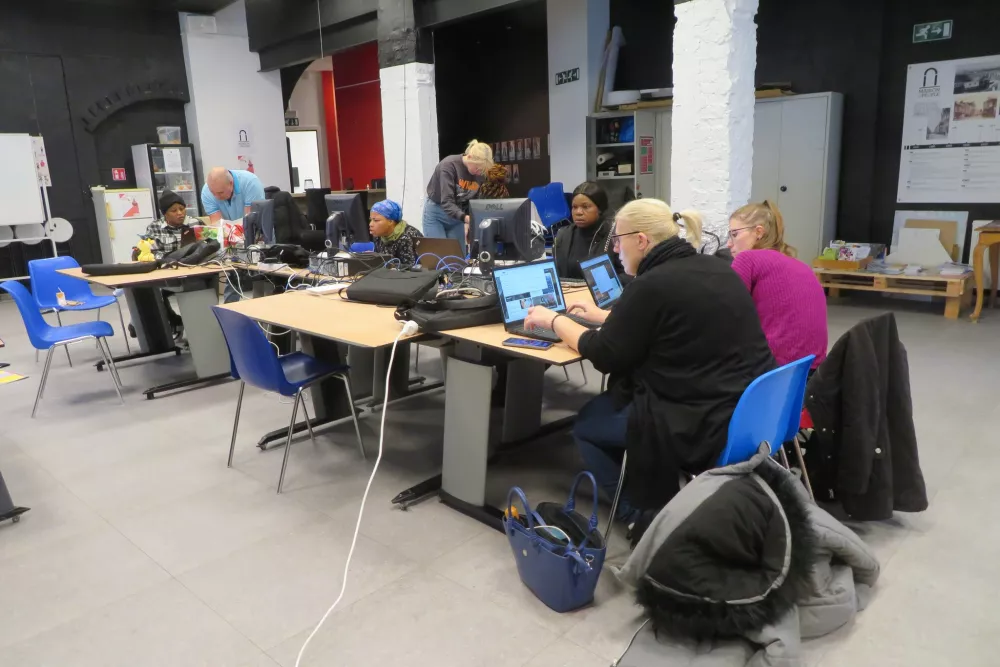
I would like to warmly thank all the people who dedicated their time and shared their knowledge with me, thus contributing to the analytical content of this journal. In particular, Sophie Barla, Julien Bebronne, Pierre Labalue, and Aurélie Portois.
About this resource
The Urban Innovative Actions (UIA) is a European Union initiative that provided funding to urban areas across Europe to test new and unproven solutions to urban challenges. The initiative had a total ERDF budget of €372 million for 2014-2020.
Similar content




